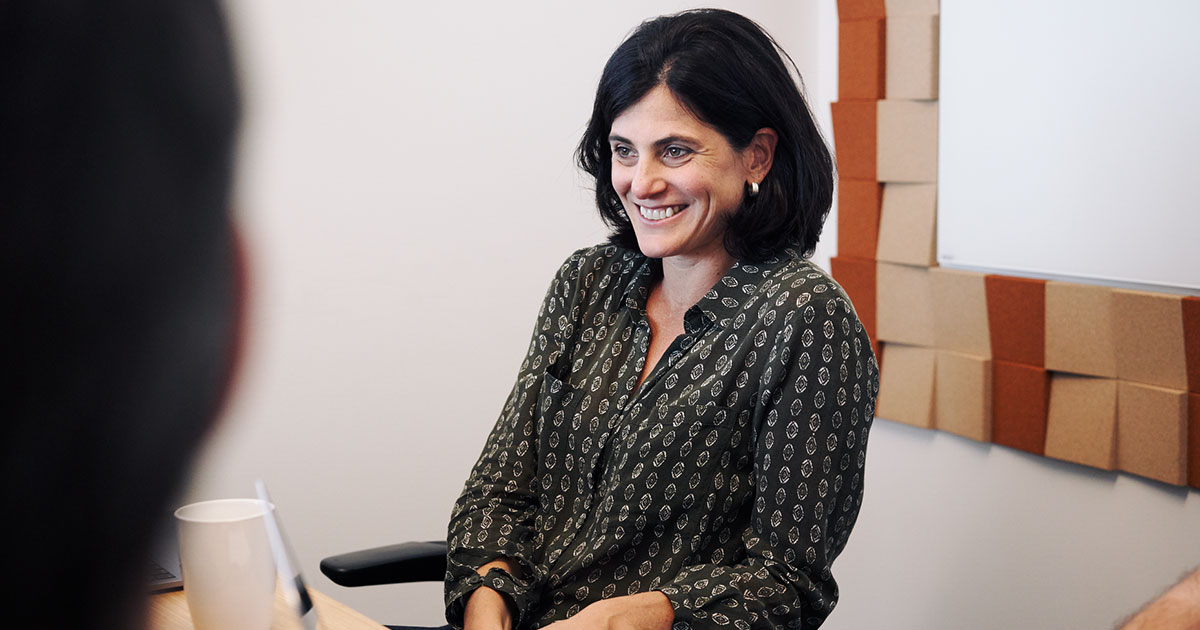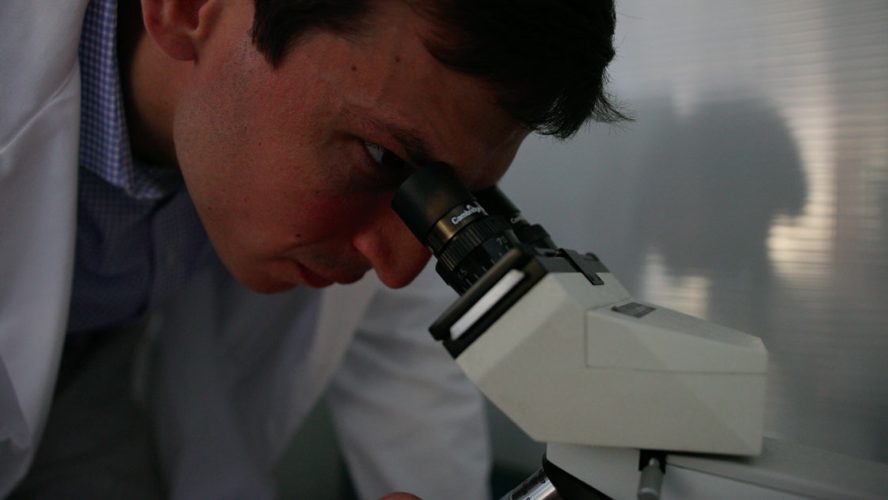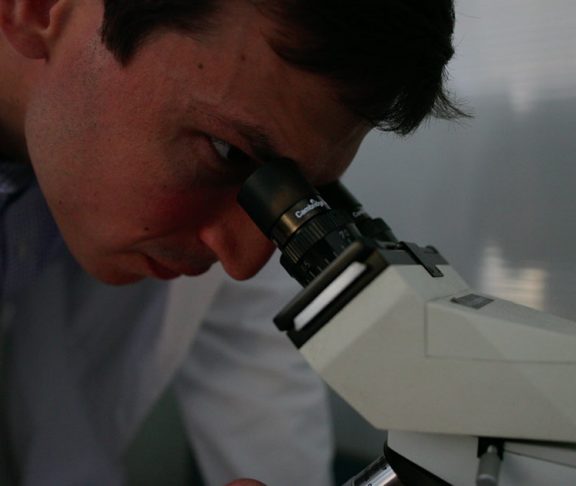Now a movement is underway to raise awareness and improve patient outcomes. The Rare As One Project, a new science program by the Chan Zuckerberg Initiative (CZI), is dedicated to bringing rare disease communities together and accelerating research by offering capacity-building grants, tools, and training.
“We want to help the rare disease community get the message out that rare is common,” says Tania Simoncelli, Rare As One Project lead and CZI’s science policy director. “Collectively, rare is common.”
Founded in 2015 by pediatrician Mark Zuckerberg, CZI has three core areas of focus: science, education, and justice and opportunity. Each area is paired with engineering, grant-making, policy work, impact investing, and advocacy.
The Rare As One Project is part of CZI’s goal to cure, prevent, or manage all diseases by the end of the century. They’re confident that shared knowledge and support across different diseases can bring patients, researchers, doctors, and other key stakeholders together to advance understanding and treatments of rare diseases.
“We need to develop strategies and approaches to tackle these diseases as one community, not one disease at a time,” says Simoncelli, who has also worked at the White House Office of Science and Technology Policy, the U.S. Food and Drug Administration (FDA), the Broad Institute of MIT and Harvard and the American Civil Liberties Union.
Solving common problems
Traditionally, medicine and research are structured around supporting diseases and illnesses that affect large populations, not small groups. In rare disease, there is a numbers problem, as patient communities are often spread around the globe and each individual research institution typically has few patients.
Rare As One is looking at ways to help these rare diseases communities work together to solve common problems.

Rare As One is starting by helping patients build communities, which then attracts researchers to study their respective diseases. Next, they’re leveraging technology to help patient and research communities accelerate research — such as creating templates for rare disease groups to share information, track research progress, and crowdsource research ideas.
“Patients really have to be at the center of the whole system and patients have the power to really change it,” says Simoncelli.
CZI is committed to this effort long-term. The Rare As One program will roll out in early 2020 with initial funding of $4.5 million. They’re currently reviewing applications from patient-led 501(c)(3) organizations to offer 10 rare disease groups two years of funding to develop and launch patient-led collaborative research networks working with clinicians and scientists.
CZI’s work is inspired by the stories and incredible work of countless rare disease advocates. One of those is Dr. David Fajgenbaum.
Success story
Dr. Fajgenbaum is a rare disease patient, doctor, and advocate. During his third year of medical school, he was hospitalized for five months and became so ill that he was given last rites. He was 25 when he was diagnosed with idiopathic multicentric Castleman disease (iMCD), a rare disease where the immune system attacks and shuts down the body’s vital organs, including the heart, liver, kidneys, and bone marrow.
An orphan drug helped him for about a year until he relapsed. He was discouraged because that was the only drug in development at the time for his condition.
“I promised my dad and my sisters that I would dedicate the rest of my life to try to cure this disease,” he says.
In all, Dr. Fajgenbaum has had five dangerous relapses, but he’s currently in his longest remission ever thanks to a treatment that he identified in the lab after testing his own samples.
The drug, Sirolimus, was developed for kidney transplantation. He realized it could manage his condition, too, and has been taking it for five-and-a-half years.
“This is a true success story,” says Dr. Fajgenbaum, who is the co-founder and executive director of the Castleman Disease Collaborative Network (CDCN), where he spearheads the Collaborative Network Approach. “If I hadn’t tried this already FDA-approved drug that was developed for something totally different, I most certainly would not be alive right now.”
He’s encouraged by the potential of shared knowledge and research: “How can we take what we learn from one disease and apply it to other diseases?”
Patient-driven approach
The status quo for research is that foundations raise money and researchers apply to have their research ideas funded. But Dr. Fajgenbaum flipped that notion by inviting patients, physicians, and researchers to proactively determine what research questions need to be answered and then proactively recruiting researchers to do the work.
His new book, “Chasing My Cure” is a blueprint for patients to follow as they look for a cure to their rare disease and inspiration for anyone facing seemingly insurmountable challenges.
“It’s really a dream of mine that we can speed up the pace of progress for many diseases beyond Castleman disease,” says the assistant professor of medicine in translational medicine and human genetics at the University of Pennsylvania, and associate director of patient impact for the Penn Orphan Disease Center. “Put patients, physicians, and researchers all at the table together and really have it be a patient-driven approach.”
He says building communities can take time but it’s essential to the success of treating and potentially curing rare diseases. For example, it took a few years to build the Castleman disease community before they crowdsourced and shared data.
“We always ask the question, ‘What drugs are already FDA-approved that might be able to help patients with Castleman disease tomorrow based on the research we just found?’” he says, noting there are 1,500 FDA-approved drugs. “While we’re waiting for new drugs to make it out to the market, we really need to leverage these existing drugs.”
Patient advocate
Heidi Bjornson‐Pennell also knows what it’s like to manage a rare disease. Two of her three children were diagnosed as toddlers with primary ciliary dyskinesia (PCD), a rare, progressive genetic disorder.
Nowadays, her children, a 13-year-old daughter and an 11-year-old son, are managing their disease as best as they can but they have challenges, including recurrent respiratory infections and loss of lung function.
“We are really on a hunt for a cure before their lung function declines further,” says Bjornson‐Pennell.
A lawyer by trade, she’s now a patient engagement strategist at CZI, where she champions the voices of rare disease patients and supports efforts to accelerate progress against disease.
“It’s been very inspiring to see how CZI is really working to elevate that voice,” she says. “The patients are the ones who have the greatest understanding of their disease. They’re the ones with the greatest sense of urgency regarding their disease and the ones most devoted to advancing treatments and finding cures.”
She feels a “great sense of optimism and hope that something can be done that will accelerate progress.”
Bjornson‐Pennell says over half of rare disease communities don’t have organizations rallying for treatments and research. Rare As One is an opportunity for rare disease patients to be seen and heard. Plus, it advances medicine.
“Research puts us much closer to that goal of trying to cure and prevent all diseases by the end of the century,” she says. “Progress in one, translates into progress in many.”


